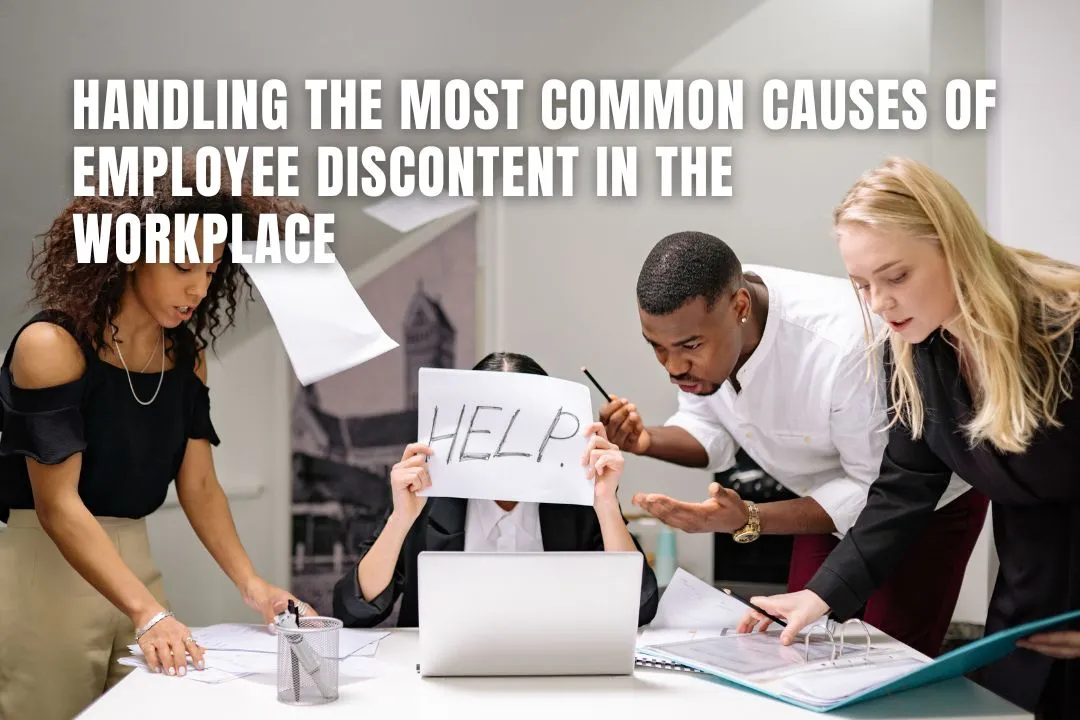Handling The Most Common Causes Of Employee Discontent In The Workplace
August 8, 2025

Conflict, disagreement, and hostility in the workplace are always a problem worth avoiding or handling as best as possible. However, when employee discontent isn’t quite as explosive, and rather simmers under the surface, it can be even more potentially dangerous than possible. Not addressing those underlying issues can cause employees to disengage from their work, and perhaps even to plan official action, including legal action. As such, here are some of the common causes of employee discontent that you should always be keeping an eye out for.
Key Takeaways: Handling Employee Discontent in the Workplace
- Lack of recognition and growth lowers morale: When employees feel unnoticed or lack clear development paths, they disengage and become more likely to leave.
- Toxic workplace behaviours often go unnoticed: Gossip, favouritism, and burnout may not be immediately visible but can deeply damage team morale and cohesion.
- Inadequate diversity and inclusion weakens engagement: Offering underrepresented employees a genuine voice and leadership opportunities strengthens workplace culture.
- Ignoring employee rights leads to discontent and legal risk: Late payments, skipped breaks or unpaid overtime erode trust and may result in costly disputes.
- Surface calm can hide deeper dissatisfaction: Just because employees are not openly complaining doesn’t mean they’re content, regular check-ins are vital.
Register Your LLC
Company Registration
START NOWPoor Recognition And Growth Opportunities
If your team members feel like they’re nothing but cogs in the machine and their individual hard work goes unnoticed or unrewarded, then morale will drop and motivation will fade. Similarly, if employees don’t see a clear path for advancement or professional growth, they may feel stuck and undervalued. This leads to disengagement and eventually, turnover. Regular feedback that implements employee development plans, including mentorship, training, and promotion, can help you show your team that you’re truly invested in their future.
Toxicity In The Workplace
Outright hostility, even harassment, can at least offer clear indicators of what kind of action you can take. Toxicity in the workplace can often be a lot harder to address initially. It’s not always easy to see gossip, favoritism, bullying, or burnout when they’re happening, but they can quickly destroy any morale and sense of team cohesion. You have to be proactive in encouraging open communication, setting healthy boundaries, and checking in with employees, giving them the courage to speak out against toxicity so that you become more adept at handling it.
A Lack Of Diversity And Inclusion
Despite a lot of progress being made recently to create more open and equal workplaces, a lot of businesses still do not anticipate the needs of underrepresented groups as well as they should. Rather than voicing support alone, offering your employees a voice tends to work much better. Investing in ERG leadership training can help you build towards giving employees the tools and platform to connect and advocate for themselves and each other. It can also help you avoid the problem of managers and high-level staff failing to adequately meet DEI needs through unconscious biases.
Not Taking Their Rights Seriously
If you’re not paying your employees on time, reliably, not giving them overtime pay, or encouraging them to skip breaks more often to keep up with productivity, not only can it hugely damage morale, it can become a serious legal liability as well. Workers who feel exploited, overworked, or underpaid often become disillusioned and disengaged, just the right ingredients to take legal action against their employer. Ensuring your compliance with labor laws can make sure that you’re not putting a big target on your own back.
Your employee’s needs must be met. Just because they’re not actively kicking off doesn’t mean everything’s alright. If you can feel that something is off, but can’t quite place what, consider the options above or, better yet, ask them.

